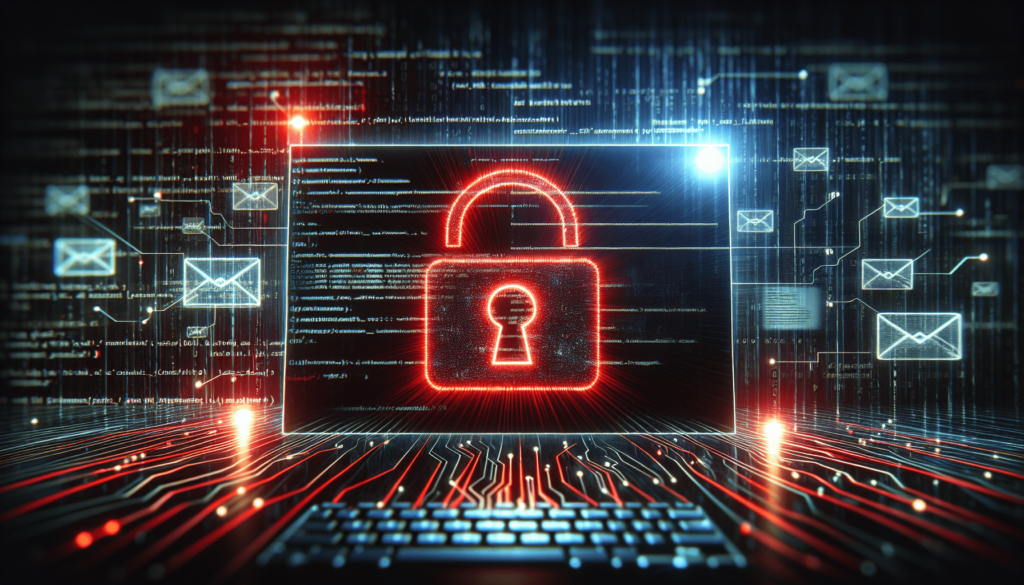In a recent report from Cisco Talos, ransomware and business email compromise (BEC) attacks have emerged as significant threats, making up a striking 60% of all cyber incidents in the second quarter of 2024. Technology firms, in particular, were heavily targeted, with cybercriminals viewing them as gateways into other crucial sectors. The report highlighted that compromised credentials on valid accounts were the primary method of initial access, accounting for 60% of attacks. Additionally, vulnerabilities like misconfigured systems and inadequate multi-factor authentication (MFA) implementation were prevalent, facilitating these breaches. With ransomware alone making up 30% of incidents, threat actors have been deploying a variety of tactics to infiltrate systems and perpetuate their attacks. These findings underscore the urgent need for robust cybersecurity measures and vigilance across all industries. Have you ever wondered how secure your personal or business data really is? With the rise in cyber threats like ransomware and business email compromise (BEC), it’s becoming increasingly critical to understand the types of attacks happening and how they can impact you. These two types of cyber incidents now account for a whopping 60% of all cyber incidents in the second quarter of 2024. Let’s take a detailed, friendly, and somewhat humorous dive into this worrying yet fascinating world.
What Are Ransomware and BEC?
Understanding the landscape of cyber incidents starts with clarifying what we mean by ransomware and BEC. They might sound like fancy buzzwords, but they represent serious threats.
The Not-So-Jolly Ransomware
Ransomware is like a virtual burglar that breaks into your home, locks all your doors and windows, and then demands you pay a ransom to get the keys back. Essentially, it’s malicious software designed to block access to your computer system until a sum of money (the ransom) is paid, often in untraceable cryptocurrencies. The threat isn’t just hypothetical; it’s a day-to-day reality for many organizations.
The Crafty Business Email Compromise (BEC)
On the other hand, BEC attacks are more like con artists. They trick individuals into handing over sensitive business information, like financial details or login credentials, by compromising legitimate business email accounts. Usually, the attackers send phishing emails that look strikingly legitimate, aiming to deceive their targets into fulfilling fraudulent financial requests. BEC is less about brute force and more about psychological manipulation.
A Look at 2024: Cyber Attacks Intensify
Statistical Overview
According to a Cisco Talos report, ransomware and BEC accounted for 60% of all cyber incidents in Q2 of 2024. Let’s break this down:
| Type of Attack | Q1 Percentage | Q2 Percentage | Increase/Decrease |
|---|---|---|---|
| Ransomware | 22% | 30% | +8% |
| BEC | 50% | 30% | -20% |
That’s not all. Technology, retail, healthcare, pharmaceuticals, and education were the most targeted sectors during this period. Technology took the top spot with 24% of incidents, marking a 30% rise from the previous quarter.
Why Technology Is a Prime Target
Why are technology firms the favorite prey? It’s simple: The bad guys see these firms as gateways into other industries. Since technology businesses often service a range of sectors, including critical infrastructure, compromising a tech firm can provide a handy map to infiltrate other industries.

Initial Access Methods: How They Get In
Compromised Credentials
The most common way cybercriminals gain initial access is through compromised credentials. In Q2, this method accounted for 60% of attacks—a 25% rise from Q1. It’s like sneaking into a party with someone else’s invitation. Scarily effective, isn’t it?
Vulnerable or Misconfigured Systems
Think of vulnerable systems as houses with broken locks. Not exactly Fort Knox, right? In Q2, 2024, vulnerable or misconfigured systems and lack of proper Multi-Factor Authentication (MFA) implementation were the joint most observed security weaknesses. Both were up by 46% from the previous quarter.
Ransomware: The Grimy Details
Ransomware incidents made up 30% of Cisco Talos Incident Response (Talos IR) team’s engagements over Q2, representing a 22% increase from Q1. Let’s dig deeper into some prominent ransomware groups and their creative tactics:
Underground Team
In one episode worthy of a thriller novel, the Underground Team leveraged Secure Shell (SSH) to move laterally within the environment and reactivated previously disabled Active Directory user accounts. They even sent harassing messages to employees’ personal emails as a coercive tactic.
BlackSuit
BlackSuit gained access using valid credentials through a VPN not protected by MFA. Once in, they maintained persistence by deploying tools like AnyDesk and Cobalt Strike and used PsExec and WMIC to move laterally across the network.
Black Basta
This group, another joyful bunch, gained initial access using compromised credentials on an RDP account not protected by MFA. They resorted to using remote PowerShell execution to start a shell on remote systems, facilitating data exfiltration with the open-source command line tool Rclone.
Lack of MFA: An 80% Problem
In 80% of ransomware incidents in Q2, the lack of proper MFA implementation on critical systems like VPNs made initial access easier. It’s akin to leaving your front door wide open in a high-crime neighborhood.

BEC: The Deceitful Tactics
While ransomware incidents rose, BEC attacks were the cause of 30% of incidents from April to June 2024, though this marks a drop from 50% in Q1. How were these cunning deceivers getting in?
Smishing
Smishing is like spear phishing via SMS. Attackers send fraudulent text messages to trick recipients into sharing personal information or clicking malicious links to compromise their login credentials.
Phishing Emails
In one case, a phishing email sent to an employee’s personal email redirected them to a fake login page. An MFA push notification was sent and accepted, granting the attacker access.
Mailbox Rules Exploitation
Here’s a creative twist: After gaining access to a user’s email account, attackers created Microsoft Outlook mailbox rules to send emails to a folder named “deleted.” They then used the compromised account to send over a thousand phishing emails to internal and external recipients.
Mitigation Strategies: How to Protect Yourself
Enough about the doom and gloom. Let’s talk about ways to protect yourself from these cyber menaces.
Enable Multi-Factor Authentication (MFA)
MFA is like adding an extra lock to your door. Even if someone steals your key, they still need an additional code to get in. Enabling MFA on all critical systems, especially VPNs and email accounts, adds a valuable extra layer of security.
Regular Software Updates
Keeping your software up-to-date is essential. It’s the equivalent of fixing those broken locks on your doors and windows. Vulnerable or outdated software is an open invitation for cybercriminals.
Employee Training
Ever heard the phrase “prevention is better than cure”? A well-trained team is less likely to fall for phishing emails or smishing attacks. Regular training ensures employees can spot and report suspicious activities.
Back Up Your Data
Having a robust data backup and recovery plan can save your bacon in the event of an attack. It won’t stop the attack from happening, but it will make recovery much easier and less painful.
Implement Strong Password Policies
Encourage the use of strong, unique passwords and make it policy to change them regularly. Also, consider using password managers to keep track of these credentials securely.

Legal and Regulatory Landscape
GDPR and Cybersecurity
In Europe, the General Data Protection Regulation (GDPR) has significantly impacted how organizations handle cybersecurity. Non-compliance can result in hefty fines, making robust cybersecurity practices not just a recommendation but a necessity.
Cybersecurity Maturity Model Certification (CMMC)
For companies working with the U.S. Department of Defense, the Cybersecurity Maturity Model Certification (CMMC) is a must. This set of standards ensures adequate protections are in place to safeguard Controlled Unclassified Information (CUI).
The Role of Cyber Insurance
Many businesses opt for cyber insurance as a safeguard against potential financial losses from cyber incidents. However, it’s not a get-out-of-jail-free card. Policies often have stringent requirements for proving that you’ve taken reasonable steps to protect your data.
A Look Ahead: Future Trends
AI and Automation in Cybersecurity
Artificial Intelligence (AI) and automation are transforming the cybersecurity landscape. Machine learning algorithms can identify and mitigate threats faster than human analysts, making proactive defense more feasible.
The Rise of Quantum Computing
Quantum computing poses a new challenge and opportunity for cybersecurity. While it could potentially crack many of the encryption methods in use today, it also promises to offer new forms of encryption that could be virtually unbreakable.
Regulatory Developments
As cyber incidents rise, expect regulatory landscapes to adapt and evolve. More stringent regulations will likely be implemented globally, impacting how businesses manage and report cyber incidents.
Increased Focus on Supply Chain Security
Given the interconnectedness of today’s global economy, supply chain security will become increasingly vital. Compromising a supplier could provide entry into multiple organizations, making supply chain vulnerabilities a high-priority target for cybercriminals.

Conclusion: Securing Your Digital Future
The world of ransomware and BEC isn’t going away anytime soon, but understanding these threats and knowing how to protect yourself is half the battle. While the figures for Q2 2024 are alarming, you can mitigate risks through practical steps like enabling MFA, keeping your software updated, and rigorously training employees. Embracing new technologies like AI can also strengthen your defenses.
At the end of the day, cybersecurity is an evolving field—one that requires constant vigilance and adaptability. By staying informed and proactive, you’ll be much better equipped to navigate this complex landscape and protect what matters to you most. After all, an ounce of prevention is worth a pound of cure, especially when it comes to keeping the cyber villains at bay.
And remember, don’t let the numbers scare you into inaction. Instead, let them spur you into beefing up your defenses. Stay safe and cyber savvy!
Source: https://www.infosecurity-magazine.com/news/ransomware-bec-cyber-incidents/

